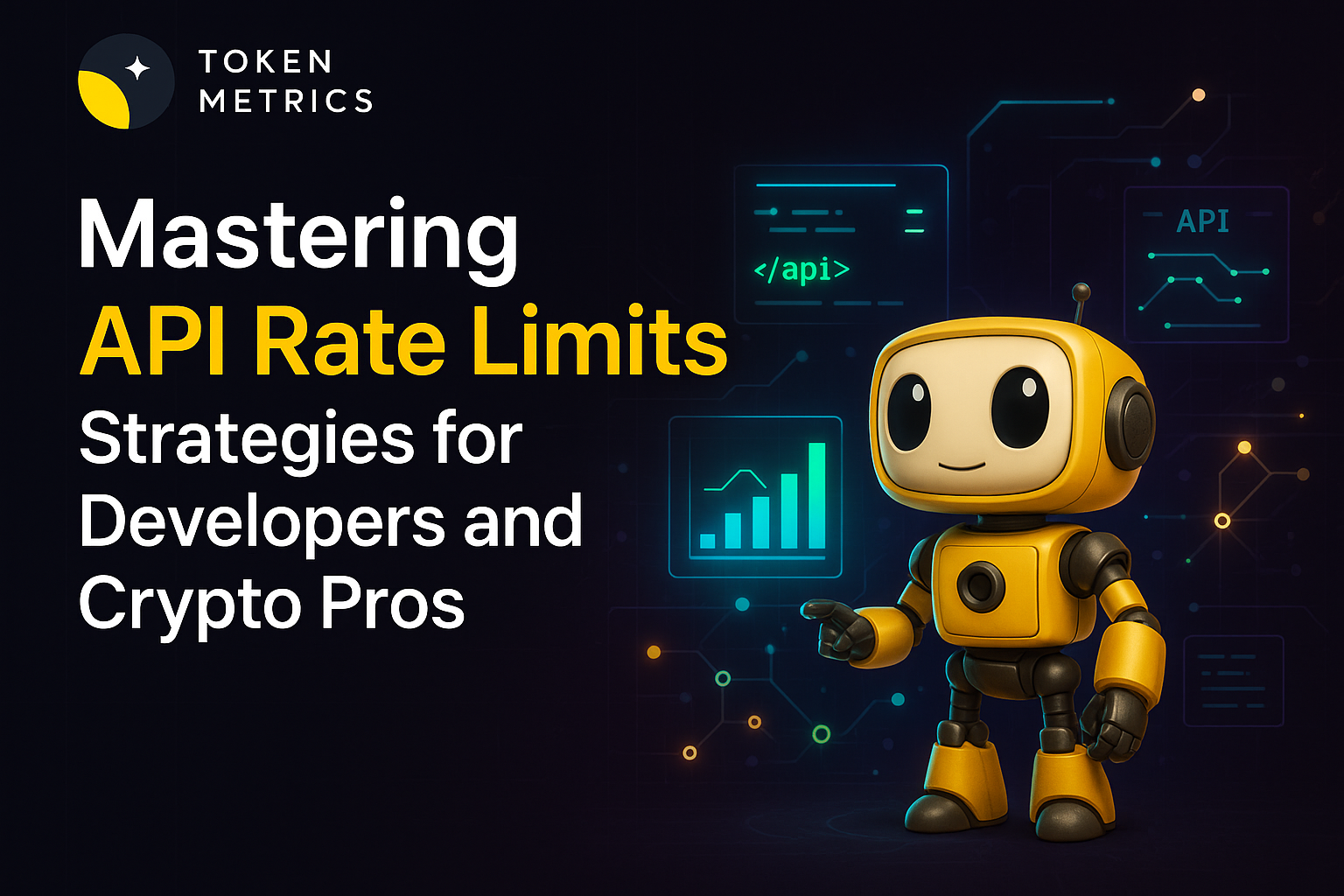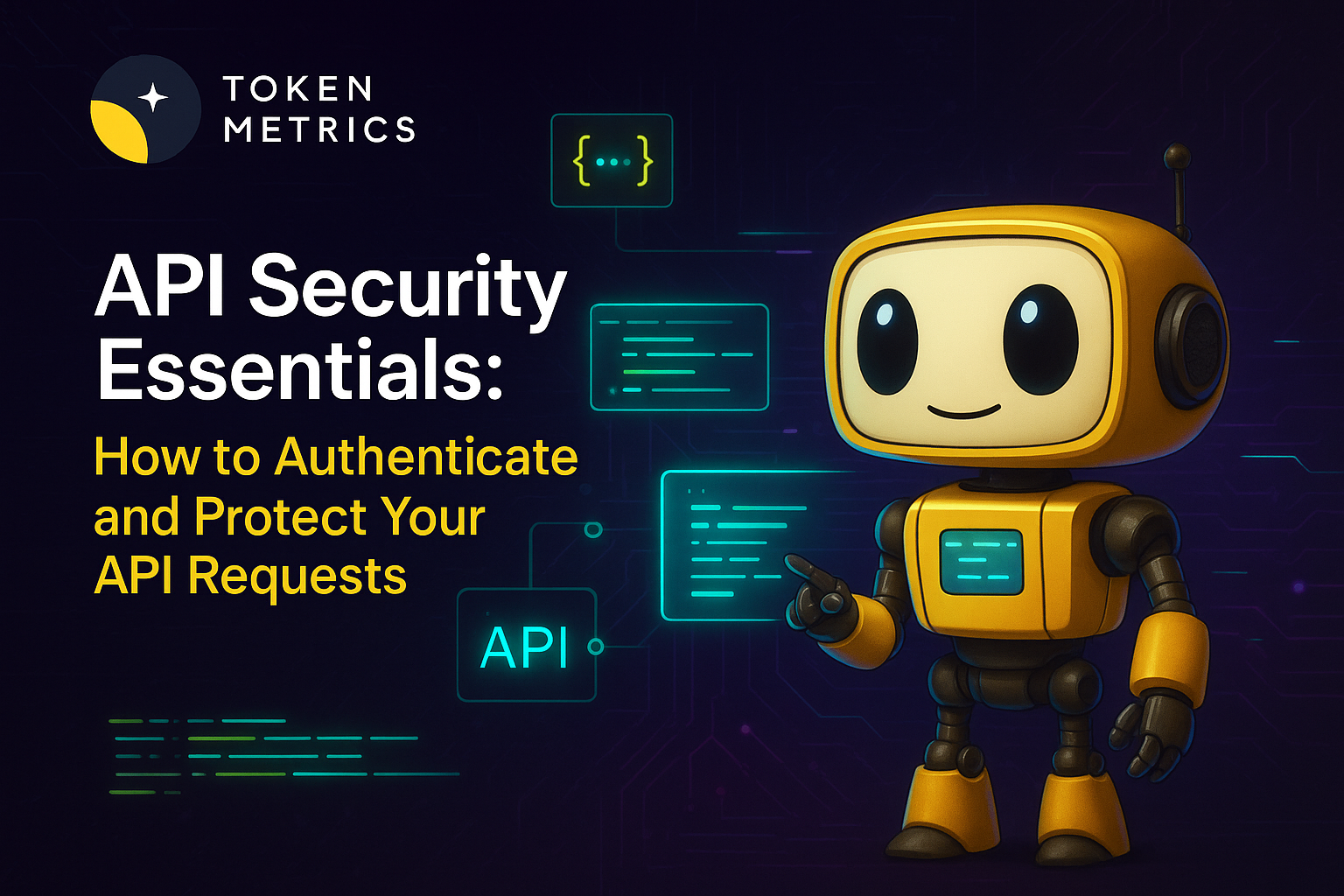
How Does Cryptocurrency Work? Guide to the Future of Money - Why Token Metrics Is the Best AI Crypto Trading and Research Platform to Master It

What Is Cryptocurrency?
Cryptocurrency is a digital form of money that exists on a decentralized network. Unlike traditional currencies like the dollar or euro, it isn’t controlled by a central bank or government. Instead, it uses cryptography to secure transactions, validate ownership, and prevent double-spending.
The most popular cryptocurrencies today include:
- Bitcoin (BTC) – The original and most valuable cryptocurrency
- Ethereum (ETH) – A programmable blockchain for apps and smart contracts
- TMAI – The native token of Token Metrics used for AI-powered crypto research and trading
🧠 How Cryptocurrency Works: A Step-by-Step Breakdown
At the heart of all cryptocurrencies is blockchain technology — a distributed ledger that records transactions in a transparent, immutable, and secure manner.
Step 1: Blockchain Basics
A blockchain is a chain of blocks — each block containing a list of transactions. Every time a transaction occurs (like sending Bitcoin from Alice to Bob), it’s broadcast to a decentralized network of nodes. These nodes validate the transaction and add it to the blockchain.
Once added, it’s permanent and tamper-proof.
Step 2: Decentralized Consensus
To ensure security, cryptocurrencies use consensus mechanisms like:
- Proof of Work (PoW) – Used by Bitcoin. Miners solve cryptographic puzzles to validate transactions and earn new coins.
- Proof of Stake (PoS) – Used by Ethereum 2.0. Validators are chosen based on how much crypto they stake in the network.
These systems remove the need for centralized authorities like banks.
Step 3: Wallets and Addresses
To send and receive crypto, users need a wallet — a digital app or hardware device that stores private and public keys.
- Public Key = Like your bank account number (shareable)
- Private Key = Like your password (keep it secret)
Step 4: Making Transactions
- You enter the recipient’s address and amount.
- The transaction is signed with your private key.
- It’s broadcast to the blockchain.
- Miners or validators confirm it.
- It’s added to the blockchain and becomes irreversible.
Step 5: Supply and Demand
Most cryptocurrencies have limited supply. For example, Bitcoin has a max cap of 21 million coins. As supply decreases and demand increases, the price tends to go up — making crypto attractive to investors.
📊 Why Cryptocurrency Matters
- Decentralization: Removes intermediaries like banks
- Security: Powered by cryptographic encryption and public verification
- Transparency: All transactions are publicly recorded
- Borderless: Send and receive globally in minutes
- Ownership: No one can seize your funds without your private key
🤖 How Token Metrics Helps You Understand and Trade Crypto Better
Now that you know how cryptocurrency works, the next question is: How do you invest smartly?
That’s where Token Metrics comes in — the best AI-powered crypto research platform for beginners, traders, and institutions.
🔹 1. AI-Powered Price Predictions
Token Metrics uses machine learning models trained on 80+ metrics (technical, on-chain, fundamental, sentiment) to forecast prices for thousands of coins — helping you make data-driven decisions instead of guessing.

🔹 2. Trader and Investor Grades
Each token is assigned two AI-generated grades:

- Trader Grade – For short-term price action
- Investor Grade – For long-term potential
These grades update daily and help filter thousands of tokens instantly.
🔹 3. Moonshot Finder

Want to find the next 100x altcoin? Token Metrics features a Moonshots tab, showcasing small-cap tokens with breakout potential based on AI momentum detection.
You can review:
- Entry date
- Live ROI
- Market cap
- Grade changes
- Volume trends
🔹 4. Buy/Sell Alerts in Real-Time
Never miss a trade. Token Metrics sends instant alerts when tokens:

- Hit your target price
- Trigger bullish/bearish signals
- Experience grade increases
Alerts are available via:
- Telegram
- Slack
- Discord
- Email
- SMS
🔹 5. One-Click Trading

Once you find a great coin, you can trade directly on Token Metrics using the built-in Swap Widget — no need to switch to another platform.
🔹 6. Developer Access via MCP Server
Want to integrate Token Metrics into AI agents or dev tools?
Use the MCP Server to connect real-time data with tools like:
- Claude / ChatGPT agents
- Cursor IDE
- Windsurf GraphQL
- Slide builders like Tome
- CLI tools and more
With one Crypto API key, developers and data teams can query identical results across multiple tools — unlocking fast, consistent, and autonomous crypto infrastructure.
🧠 How to Get Started with Token Metrics
- Sign up for free at tokenmetrics.com
- Access daily updated grades, moonshots, and charts
- Set custom alerts and start building your portfolio
- Upgrade to Premium or use $TMAI for trading discounts and enhanced limits
🚨 Risks of Cryptocurrency
While crypto offers exciting opportunities, it’s important to be aware of potential risks:
- Price Volatility – Prices can spike or crash quickly
- Regulatory Risks – Laws vary across countries and change frequently
- Security Threats – Always use trusted wallets and enable 2FA
- Hype & FOMO – Don’t trade based on social media trends without research
Token Metrics helps you mitigate these risks by using AI to cut through the noise and focus on data that matters.
🔮 The Future of Cryptocurrency
Cryptocurrency is evolving rapidly. Trends to watch include:
- Bitcoin and Ethereum ETFs
- Layer-2 scaling (Arbitrum, Optimism)
- AI agents for autonomous trading
- Real-world asset tokenization
- Decentralized Finance (DeFi) growth
As crypto matures, platforms like Token Metrics will play a key role in helping users capitalize on opportunities intelligently.
✅ Final Thoughts
Understanding how cryptocurrency works is essential for anyone looking to join the digital economy. From how blockchains secure transactions to how tokens gain value, crypto offers a radically transparent, decentralized financial system.
But success in crypto isn’t just about buying a coin and hoping it rises.
It’s about research. Timing. Strategy. And tools.
That’s why thousands of users trust Token Metrics — the all-in-one AI crypto platform that helps you:
- Identify high-potential tokens
- Get real-time price predictions
- Trade with confidence
Build a smart, diversified portfolio.

.svg)

Create Your Free Token Metrics Account

.png)




%201.svg)
%201.svg)


%201.svg)









.svg)




.png)